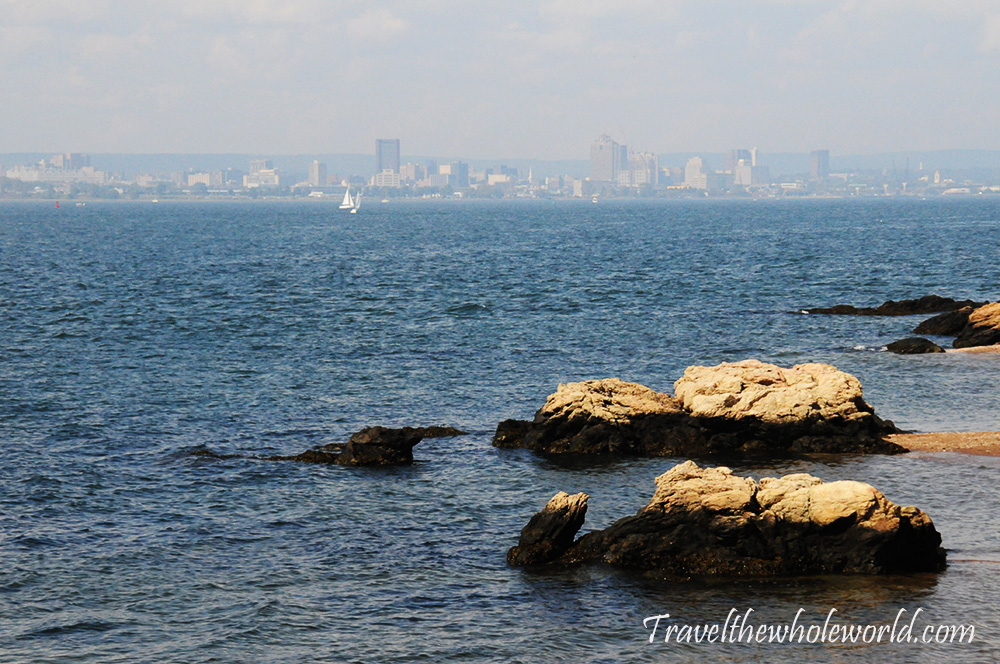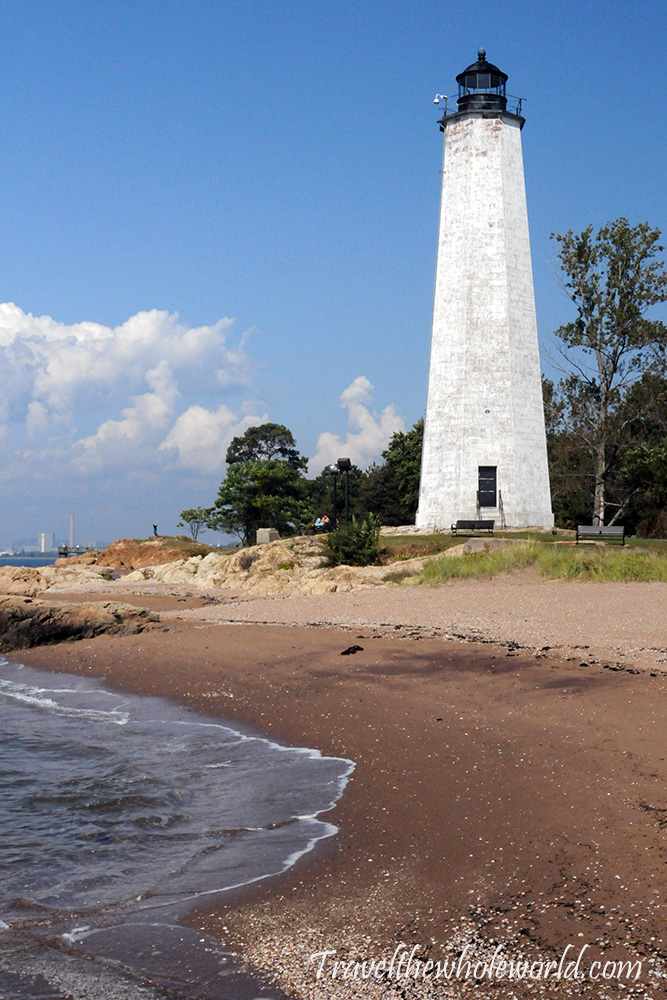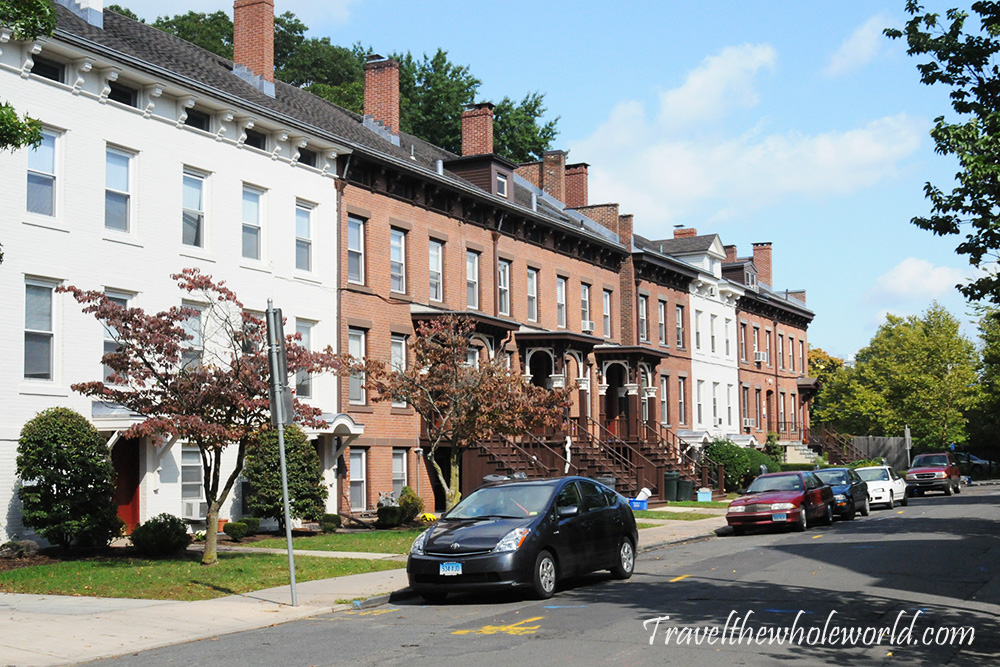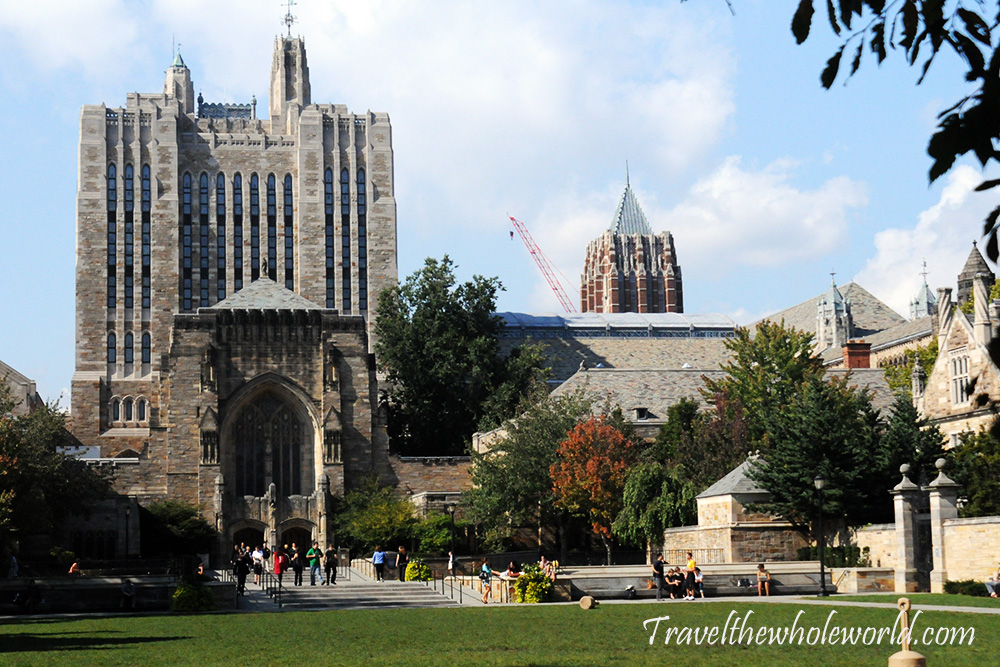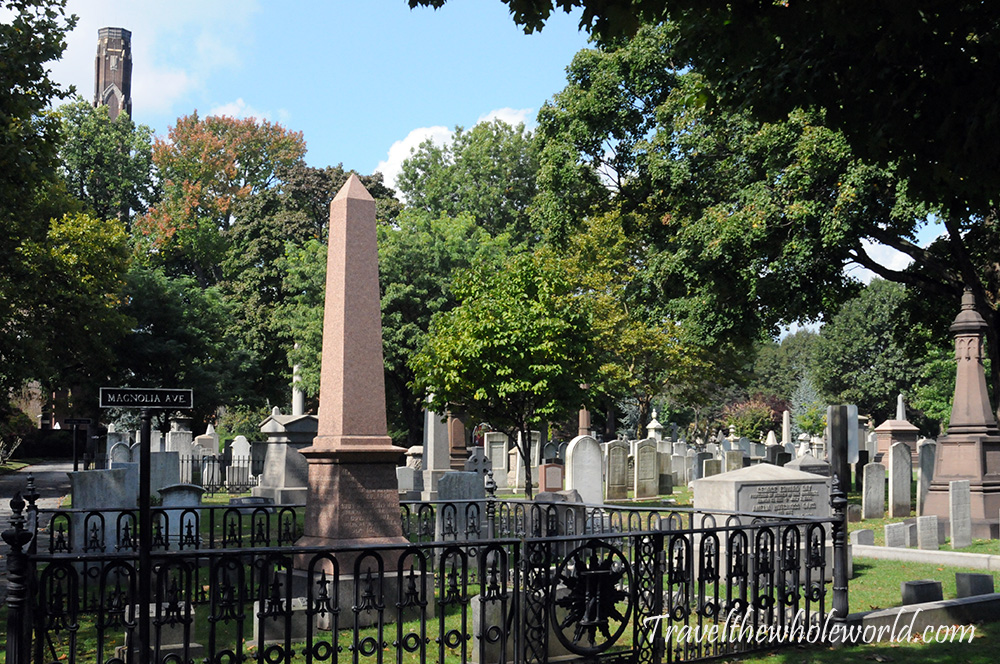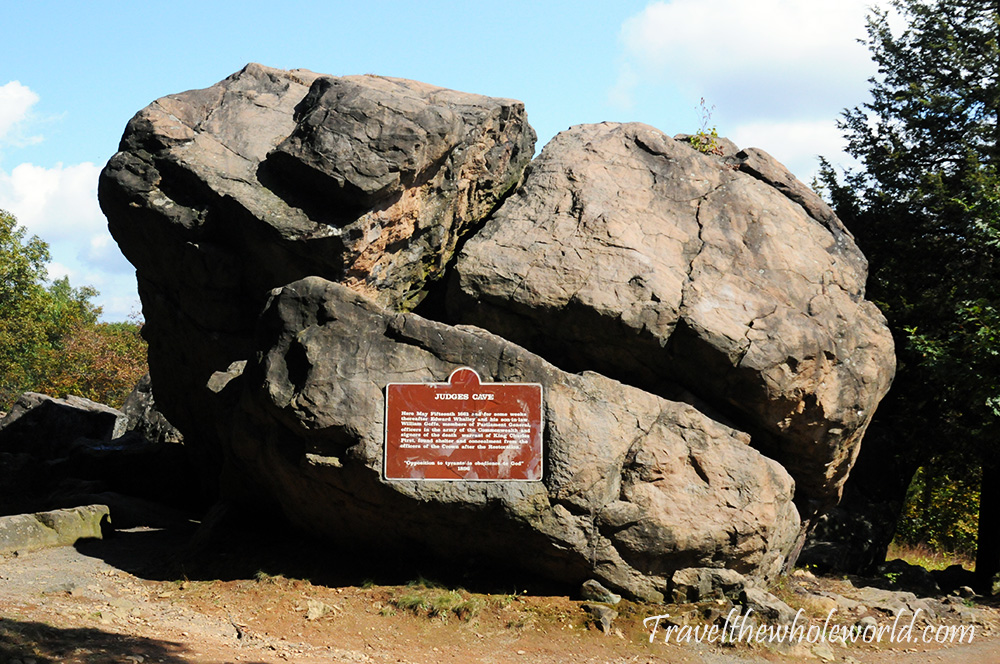Visiting New Haven
The city of New Haven may be the best city to visit in Connecticut. Located on the Long Island sound, New Haven has the benefits of small mountains behind it and the ocean in front. Above is a photo of New Haven, taken from the 5 mile point lighthouse which is photographed below.
I will admit there’s a lot I haven’t done here yet and most definitely have to return. I can still at least say from my short visit that New Haven has some sketchy neighborhoods that looked best avoided. It’s by no means a perfect seaside town. I was mostly impressed by Yale university, and some of the the views the city offered along the coast. The photograph above shows one of the main streets in New Haven, with part of Yale University below. Yale is the third oldest university in the United States, it was founded in 1701, 75 years before America was a country.
The place I most wanted to visit in New Haven was Center Church on the Green. This church was built several hundred years ago and has an underground crypt dating back to the 1600’s. Most of those buried in the crypt were prominent citizens including many founders of New Haven, and even the founder of Yale University. This old cemetery is actually on Yale University campus, but wasn’t the same as the underground crypt! I only missed out on it because somehow I ended up at the wrong location and believed it to be closed to visitors. Next time!
And lastly I did a short hike outside New Haven, which can offer some good views and even some unique history. During the hike I only took this one photo what’s known as Judge’s Cave. Its history is actually tied into England’s civil war which took place in mid 1600’s. After King Charles was captured and beheaded in 1649, his son fled in exile to France for almost a decade. Taking advantage of a period of political instability, he returned to England and assumed the throne as King of England and Ireland. One of his first acts, was ‘Restoration’, in which he quickly issued death warrants for all judges who had helped carry out the death of his father. Many of the judges were tortured and dismembered before being killed. Dozens of judges fled to other nations, and two of them even ended up crossing the Atlantic and taking shelter in this rock formation. They stayed here for at least a few weeks or months hiding from English officers, until finally living their days out in Massachusetts.
